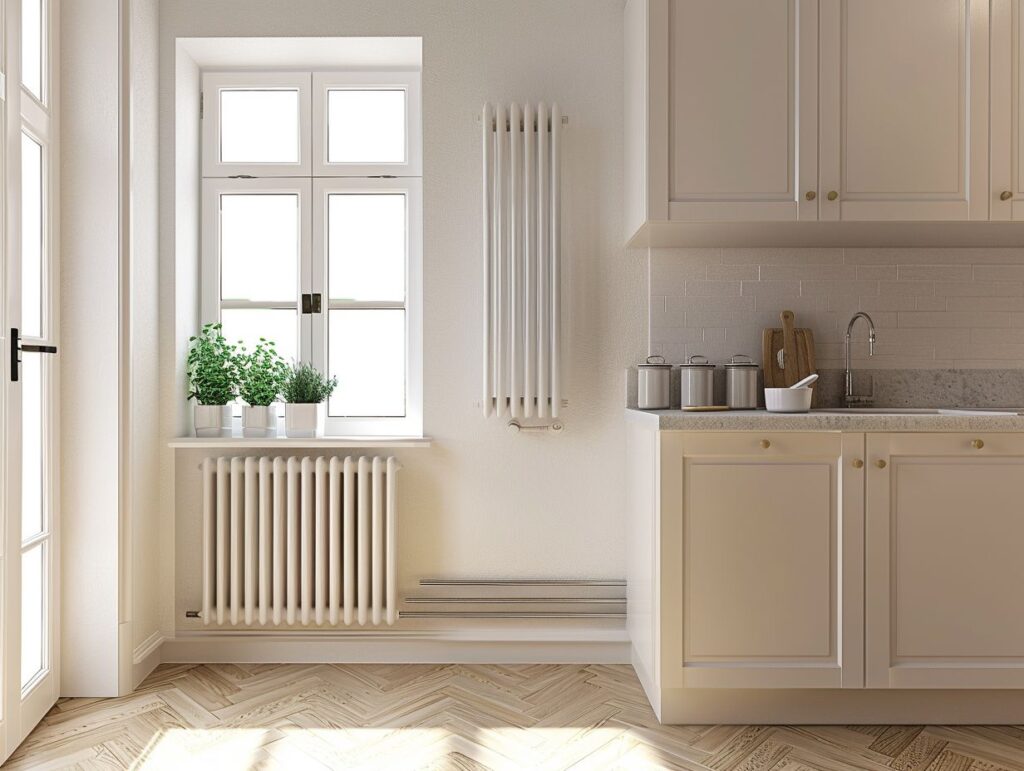If you are considering replacing your kitchen radiator with a towel rail but are unsure where to start, this comprehensive guide will walk you through everything you need to know about kitchen radiators and towel rails. The guide covers understanding how they work, reasons for replacement, factors to consider, and the step-by-step process of installation.
By reading this guide, you will learn about the benefits of using a towel rail in the kitchen and how it can enhance both the aesthetics and functionality of your space.
Key Takeaways:
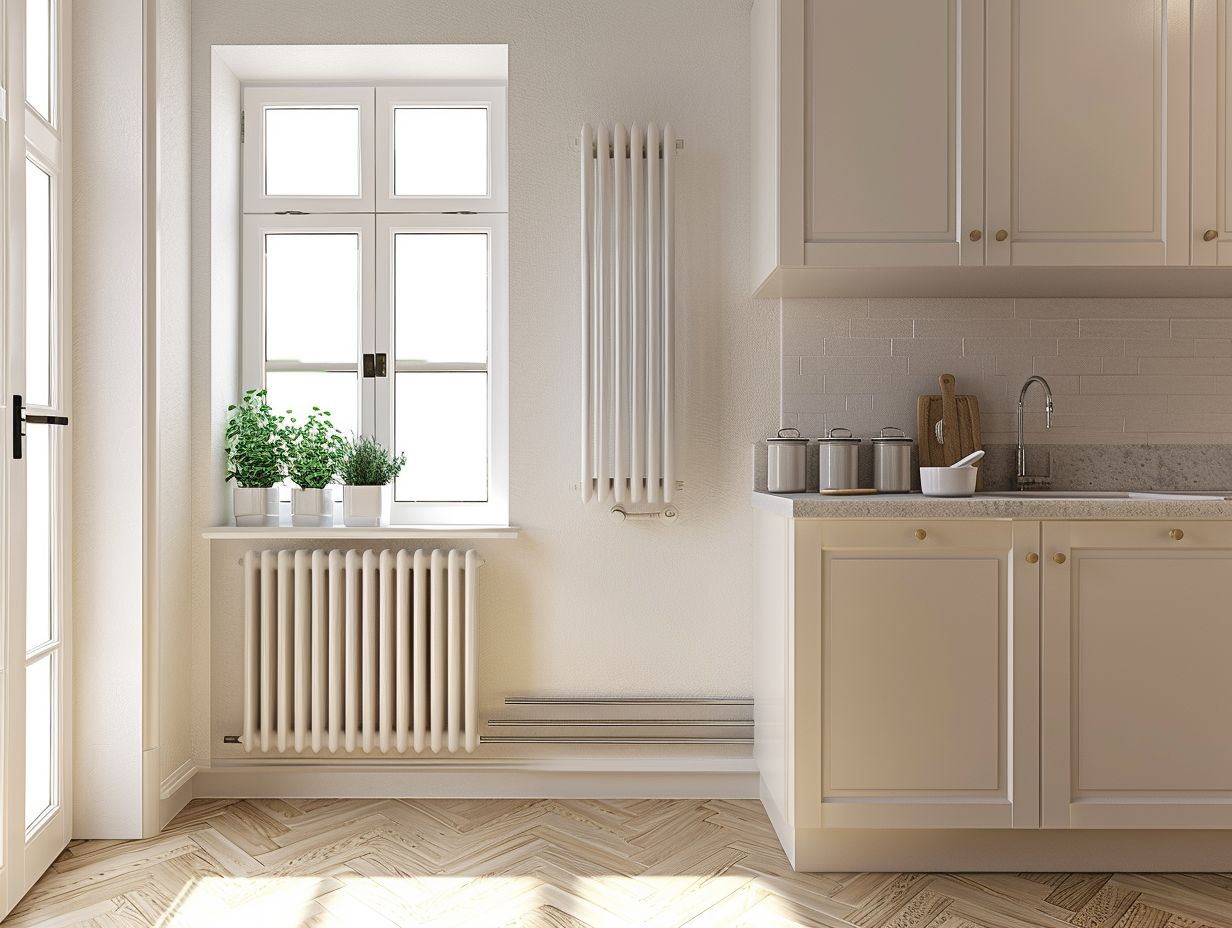
- Replacing a kitchen radiator with a towel rail can improve efficiency and aesthetics, but it’s important to consider factors like size, location, and plumbing before making the switch.
- When replacing a kitchen radiator, you’ll need to remove the old one and install the towel rail in its place. It’s important to follow proper steps to ensure a smooth and successful replacement.
- Using a towel rail in the kitchen offers practical benefits like extra storage and the ability to dry towels, as well as aesthetic advantages like a more modern and streamlined look.
Understanding Kitchen Radiators and Towel Rails
Understanding Kitchen Radiators and Towel Rails involves grasping the functionality and benefits of these heating elements in different spaces such as bathrooms, kitchens, living rooms, and bedrooms. You can see that Radiators and towel rails play a crucial role in maintaining optimal heat levels, adding both functionality and aesthetic appeal to the interior spaces.
In bathrooms, towel rails not only provide warmth for towels but also help in keeping the space cosy and comfortable.
In bedrooms, sleek radiator designs can serve as both a source of heat and a stylish focal point, blending seamlessly with the room decor.
Living rooms benefit from the versatility of radiators, offering customisable heating options to suit various preferences.
Kitchen radiators are not just about functionality; they can enhance the ambience of the room, contributing to a welcoming and inviting atmosphere during meal preparation and gatherings.
What are They and How Do They Work?
Kitchen radiators and towel rails operate by utilising a heat source, often connected to a central gas boiler, to generate warmth for your designated space. The heating calculation, expressed in British Thermal Units (BTU), determines the efficiency and output of these heating fixtures.
The connection to gas boilers is vital, as the boiler heats water that flows through the radiator or towel rail, transferring heat energy into your room. By measuring the heat output in BTU, you can assess the heating capacity needed to maintain a comfortable environment.
Factors such as room size, insulation levels, and desired temperature play a significant role in determining the appropriate size of the radiator or towel rail. It is essential to consider both the style and functionality of the unit to ensure optimal heating performance.
Reasons for Replacing a Kitchen Radiator
The decision to replace your kitchen radiator may be influenced by various factors like functionality issues, outdated aesthetics, or the desire for enhanced heating efficiency.
Upgrading the radiators in utility rooms can improve the overall effectiveness of your heating system while taking into account the installation costs.
Enhancing the functionality of your kitchen radiator is essential to ensure efficient heating during colder seasons. Additionally, aesthetically pleasing radiators can elevate the ambiance of the room.
Energy efficiency is crucial in reducing utility expenses and environmental impact. By replacing outdated radiators with newer, more efficient models, homeowners can experience improved heating performance.
Upgrading radiators in utility rooms not only affects localised heating but also has a broader impact on the overall energy consumption of the household. While the initial installation costs may vary, the long-term savings from enhanced efficiency can outweigh the expenses.
Improving Efficiency and Aesthetics
Enhancing the efficiency and aesthetics through the replacement of kitchen radiators with towel rails involves careful installation procedures, ensuring proper plumbing connections for heated towel rails and adequate electrical supply for optimal performance.
It is crucial to focus on efficiency and aesthetics when transitioning to towel rails, as these factors significantly impact the overall functionality and visual appeal of the space. To achieve this, start by selecting towel rails that complement the existing decor and layout of the kitchen, ensuring a seamless integration.
Consider the installation process, making sure that plumbing connections are secure and leak-free for proper functionality. Pay attention to electrical considerations, ensuring that the electrical supply is sufficient to power the towel rail effectively. Following these steps will result in a successful replacement process that enhances both efficiency and aesthetics.
Factors to Consider Before Replacing
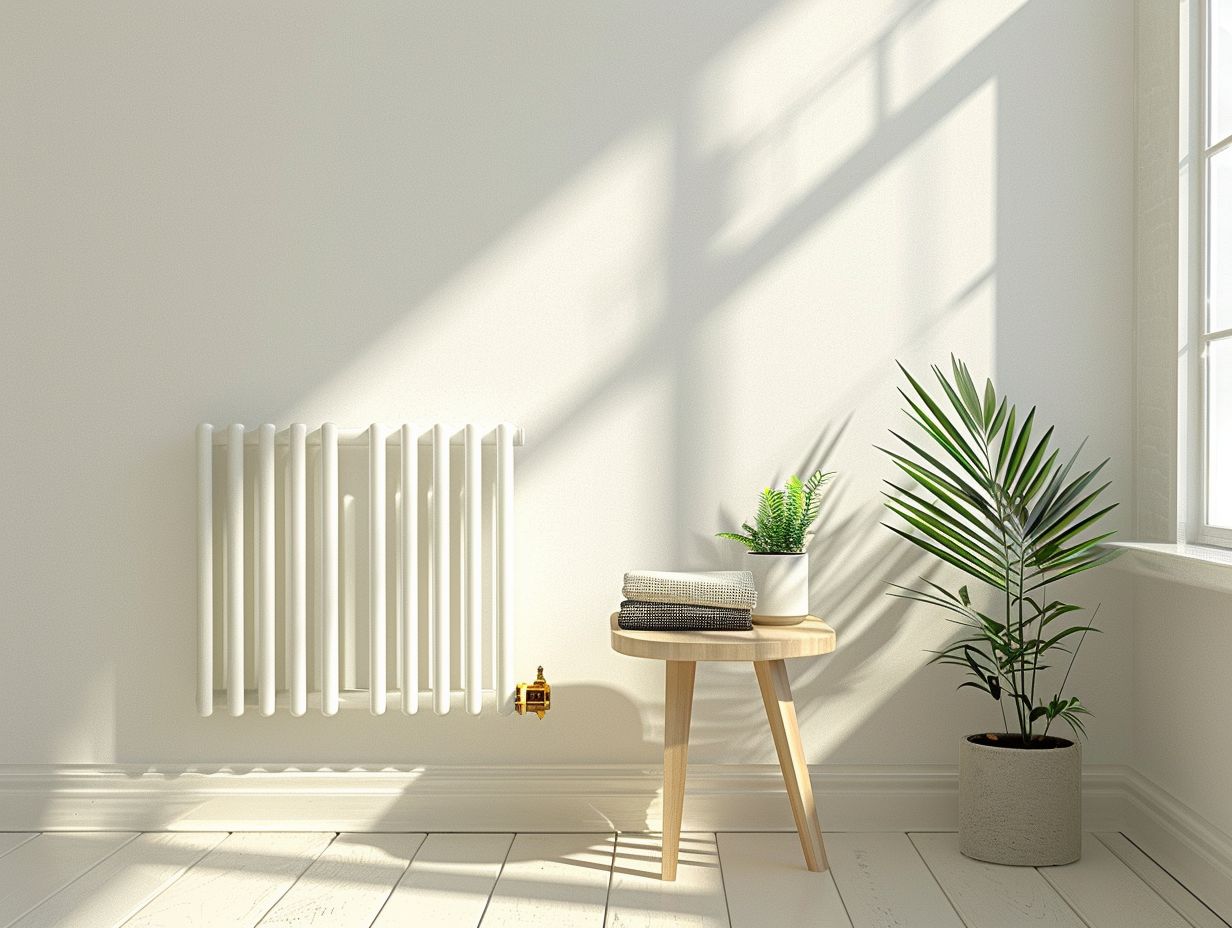
When considering the replacement of a kitchen radiator with a towel rail, you should carefully evaluate several factors. These include the size of the new fixture, its location within the space, plumbing requirements, potential leaks, and system testing to ensure a smooth and successful installation.
The size of the new fixture is crucial, as it must fit the available space while also providing sufficient heating. Evaluating the location is important for ensuring optimal heat distribution and convenient access.
Addressing plumbing needs is necessary to establish proper connections and functionality. Conducting system tests is essential to confirm the efficiency of the heating system with the new fixture in place. Finally, mitigating potential leaks is crucial to prevent water damage and maintain the longevity of the installation.
Size, Location, and Plumbing
When replacing kitchen radiators with towel rails, you must carefully select the appropriate size, strategic location, and ensure proper plumbing connections. The available space, dimensions of the towel rails, and the layout of the rails all play crucial roles in achieving an optimal heating solution.
To determine the correct size of the towel rail, you need to consider both its aesthetic appeal and functionality in your kitchen. Begin by measuring the wall space where you intend to install the rail, making sure there is sufficient room for it to fit comfortably without obstructing other elements in the room. Factor in the number of towels the rail needs to accommodate to avoid overcrowding.
When deciding on the placement of the towel rail, choose a location that allows for efficient heat distribution and easy access for hanging and drying towels. Ensuring proper plumbing connections during the installation process is essential to prevent leaks and maintain the durability of your towel rail.
Steps for Replacing a Kitchen Radiator with a Towel Rail
- When replacing a kitchen radiator with a towel rail, you will need to follow a series of steps to ensure a successful installation. To begin, turn off the heating system and allow the old radiator to cool down.
- Release the pressure from the system using a radiator key and have a container ready to catch any water that may drain out. Once drained, disconnect the old radiator from the valves and carefully remove it from the brackets.
- Next, mark and measure the placement of the new towel rail brackets on the wall, ensuring they are level and stable.
- Securely attach the brackets to the wall and then proceed to mount the new towel rail on them.
- Follow the manufacturer’s instructions carefully to ensure the towel rail is securely installed and functions optimally.
Removing the Old Radiator
When removing the old radiator, you need to use a spanner to detach the fittings and apply PTFE tape to seal any joints, ensuring a leak-free disconnection process.
- To begin the removal process, you should turn off the heating system to prevent any hot water leaks.
- Place a bucket underneath to catch any residual water that may come out during the disconnection.
- Using the spanner, gently loosen the fittings on both sides of the radiator, starting with the valve on one end.
- Make sure to support the radiator to prevent it from falling as you work.
- Once the fittings are detached, carefully lift the radiator off its brackets and lay it down to access the connections easily.
Installing the Towel Rail
To install the new towel rail, you will need to use a screwdriver to secure the rail brackets and a spirit level to ensure proper alignment and positioning within the designated space. Ensure that you have all the necessary tools at hand, including the screwdriver and spirit level.
- Begin by marking the positions where the brackets will be mounted.
- Use the spirit level to ensure that the rail will be perfectly horizontal.
- The screwdriver will come in handy for firmly fastening the brackets to the wall.
- Make adjustments as needed to achieve precision.
Proper alignment is crucial not only for aesthetic purposes but also for the functionality of the towel rail. By following these steps diligently, you can create a secure and stable installation that will last for years to come.
Benefits of Using a Towel Rail in the Kitchen
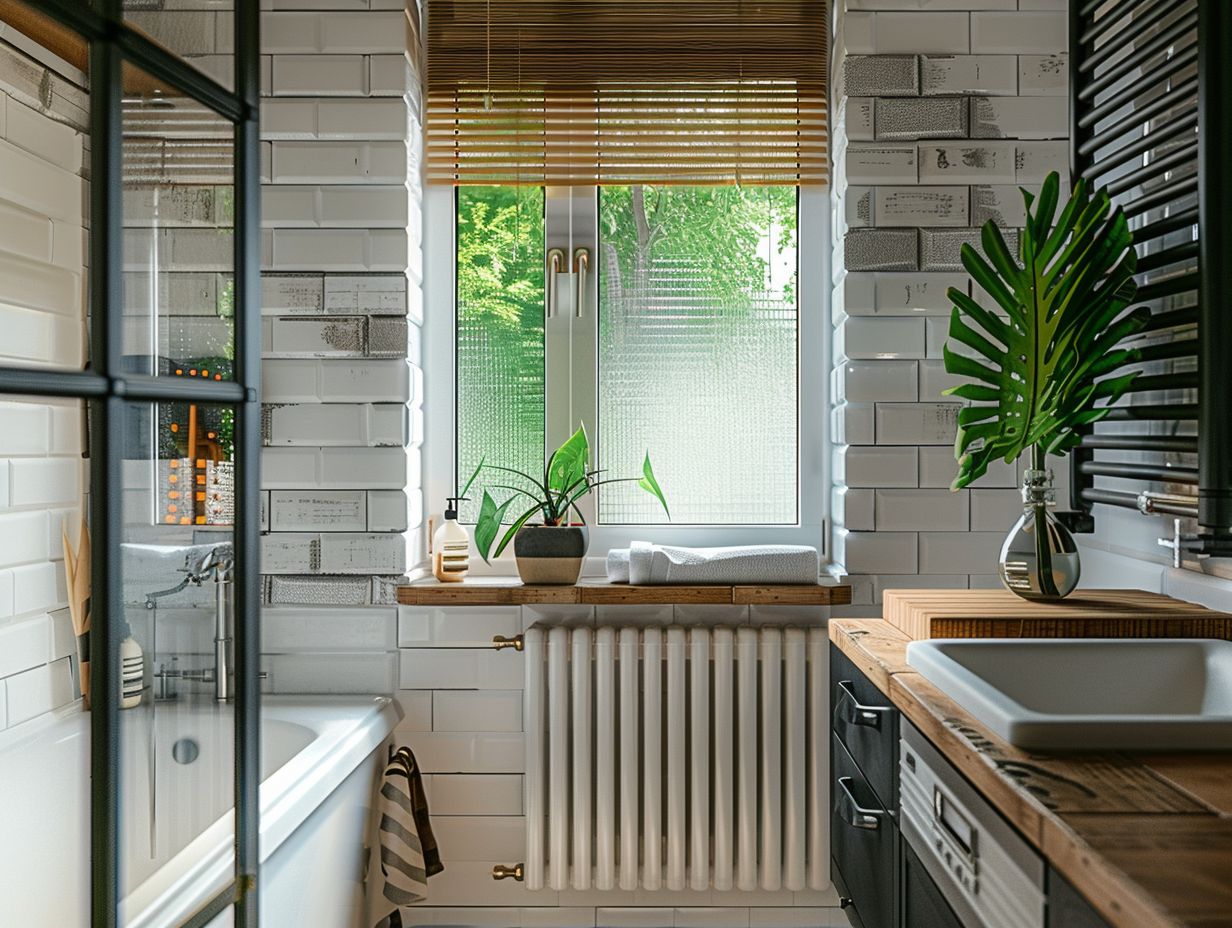
Utilising a towel rail in your kitchen offers practical advantages such as efficient heating solutions for drying items, along with aesthetic benefits that enhance the overall decor. The innovation of heated socks and electric blankets has further expanded the utility of towel rails beyond traditional uses.
When you incorporate a towel rail, you not only serve the function of keeping towels warm and dry but also extend to providing a cosy atmosphere in your kitchen. The radiant heat from the towel rail can create a welcoming environment during colder months, making it a versatile addition to your space.
In comparison, the evolution of heated socks and electric blankets showcases how technology has revolutionised heating elements, pushing the boundaries of comfort and convenience. This adaptability of towel rails reflects a modern approach to home heating solutions.
Practical and Aesthetic Advantages
The installation of a towel rail in your kitchen not only provides efficient heat distribution for drying purposes but also adds a stylish element to your room’s decor, making it a popular topic of discussion in property forums focused on interior design and functionality.
The versatility of a towel rail in your kitchen extends beyond its practical functionality. With various designs available, you can choose a towel rail that complements your existing kitchen aesthetic, serving as both a useful tool and a decorative accent.
This dual functionality makes it a valuable addition to your kitchen space, blending functionality and style seamlessly. Discussing the integration of towel rails in kitchen spaces can spark creative ideas among enthusiasts on property forums, encouraging a fresh perspective on interior design choices.
Final Thoughts and Recommendations
When considering the replacement of kitchen radiators with towel rails, you can choose between DIY installations or hiring professionals for the task. Factors such as cost, required labour, and the need for specialised skills like plumbing or electrical work should guide your decision-making process.
Opting for DIY installations can be a cost-effective option for those with some experience in home projects and a willingness to dedicate time and effort to the task.
It is essential to keep in mind that installing towel rails involves working with plumbing connections and possibly electrical components, which might require specialised skills or knowledge.
On the other hand, hiring professionals guarantees a high-quality installation, saves time, and reduces the risk of errors that could lead to costly repairs. Given the complexity of the task, consulting with experts and obtaining quotes can assist you in making an informed decision that best suits your needs and budget.
Final Thoughts and Recommendations
When seeking advice on kitchen radiator replacements and towel rail installations, you may find valuable insights and DIY tips by exploring property forums. Incorporating heated throws in addition to towel rails can enhance the heating experience in kitchen spaces.
Property forums not only offer practical advice on choosing the right radiators and efficiently installing towel rails but also provide a platform for users to seek expert recommendations for a seamless heating solution.
By engaging with these online communities, you can access a wealth of knowledge shared by experienced homeowners and professionals in the field. Discussions surrounding the potential benefits of heated throws to complement the comfort provided by towel rails are common, highlighting the versatility and added warmth these throws can bring to a kitchen setting.
Frequently Asked Questions
Can You Replace a Kitchen Radiator with a Towel Rail?
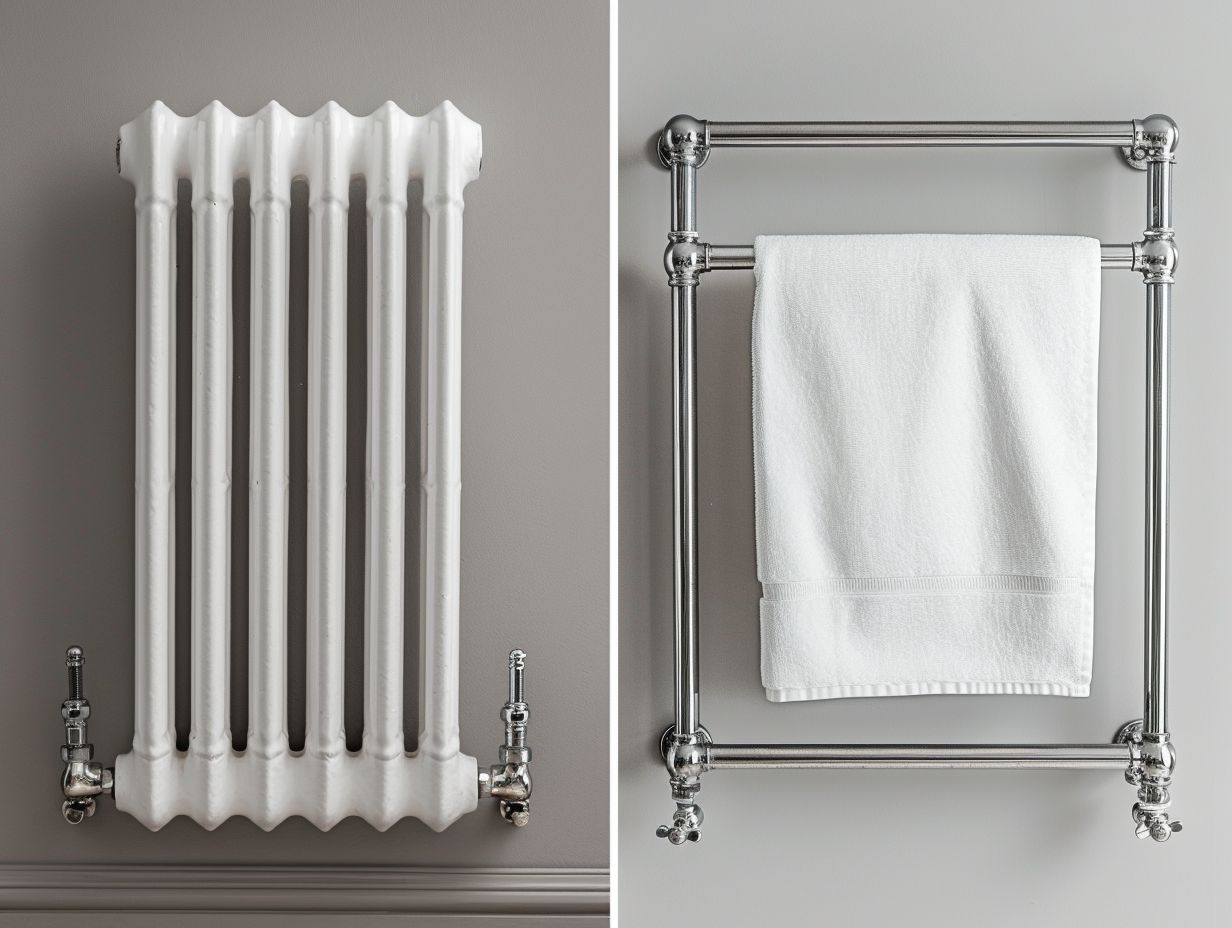
Yes, it is possible to replace a kitchen radiator with a towel rail. Both serve the purpose of heating a room, but a towel rail can also provide a convenient place to dry towels.
What are the benefits of replacing a kitchen radiator with a towel rail?
Replacing a kitchen radiator with a towel rail can provide additional functionality and space-saving benefits. It can also add a stylish touch to your kitchen decor.
Do I need to hire a professional to replace a kitchen radiator with a towel rail?
It is recommended to hire a professional for any major plumbing or heating changes. They can ensure that the installation is done correctly and safely.
Can any towel rail be used as a replacement for a kitchen radiator?
No, not all towel rails are suitable for use as a replacement for a kitchen radiator. Make sure to choose one that is specifically designed for heating and has the appropriate BTU output for your kitchen.
What should I consider when choosing a towel rail to replace a kitchen radiator?
When choosing a towel rail to replace a kitchen radiator, consider the size and layout of your kitchen, the heat output needed, and your personal style preferences. It’s also important to ensure that it is compatible with your existing heating system.
Are there any specific installation requirements for replacing a kitchen radiator with a towel rail?
The installation process for replacing a kitchen radiator with a towel rail may vary depending on your specific heating system and the type of towel rail you choose. It is best to consult a professional for guidance on the installation process.

